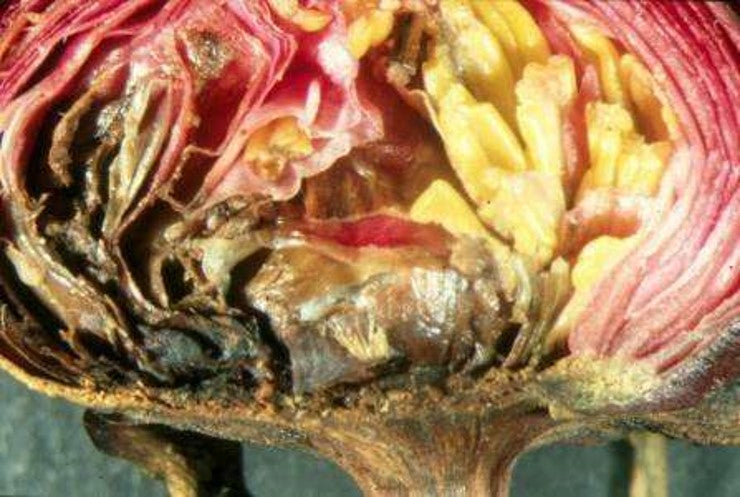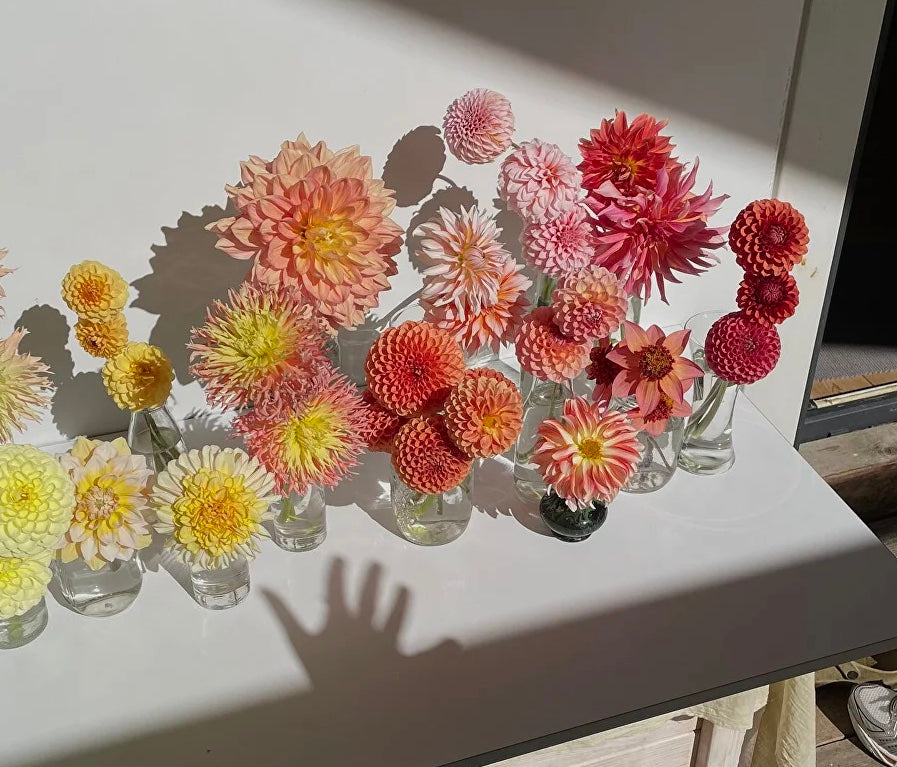Two of the most common causes of plant death or loss of flower quality are Botrytis and nematode infestations. In this article, we describe how to recognize symptoms and implement prevention and treatment strategies.
Our supplier has developed a special system for treating peony rootstocks, combining beneficial microorganisms with other components—completely chemical‑free. This protocol significantly surpasses traditional hot‑water treatment, and provides:
• More vigorous growth in the first year
• A higher yield of flowering stems per plant in the second year
Botrytis (Grey Mould)
Botrytis, also known as grey mould, is one of the most widespread fungal diseases affecting peonies, dahlias, bulbous plants, and many others. The pathogen Botrytis cinerea causes decay of various plant parts, especially under conditions of high humidity. In peonies, this disease is especially dangerous because it can spread from shoots to the rootstocks, leading to rotting and plant death .
Symptoms
1. Brown spots appear on buds and petals, enlarging over time.
2. Petals may develop a gray fuzzy coating (the fungus’s spore layer).
3. Stems and leaves turn black and rot, particularly where they touch the soil.
4. Affected buds may shrivel and fail to open.



Conditions that Increase Risk
• Prolonged damp or rainy weather
• Overcrowded planting with poor air circulation
Biological Control of Botrytis in Peonies
To manage Botrytis (gray mold), use biological fungicides that contain Bacillus subtilis, Trichoderma, or Gliocladium catenulatum. These organisms suppress fungal growth and strengthen plant resistance. Available options in the EU include Serenade® ASO by Bayer (based on Bacillus subtilis) and Prestop® (containing Gliocladium catenulatum).
Look for these names in the ingredient list of products available in your region—they will work well against Botrytis in peonies.
Nematodes
Nematodes are microscopic roundworms (0.6–1 mm) that can cause serious damage to peonies and other plants by attacking their roots, stems, and leaves. The two primary types affecting peonies are:
• Root-knot nematodes (Meloidogyne spp.), attacking roots
• Foliar (leaf) nematodes (Aphelenchoides spp.), attacking above-ground parts
Foliar nematodes are more common and often misdiagnosed as Botrytis.
Symptoms of Foliar Nematode Damage
1. Irregular leaf spots that turn brown and dry out, usually between leaf veins, eventually expanding and causing leaf desiccation.
2. Bud dehydration: Growth stops; buds may develop blackened, decayed tissue while petals remain healthy. Buds may shrivel at any stage, or, if they open, result in malformed flowers.
Foliar nematodes spread via water (e.g., rain or irrigation) and infected plant debris. They overwinter in plant remnants of the previous year.

Biological Control of Nematodes in Peonies
To control nematodes in peonies using biological methods, look for products based on Bacillus firmus, Pochonia chlamydosporia, or Purpureocillium lilacinum. These beneficial microbes attack nematode eggs and reduce their numbers in the soil. One of the well-known products in the EU is Votivo® Prime by BASF, which contains Bacillus firmus and is approved for use in organic farming.
Check your local products for these active ingredients—if they are listed, they will help protect your peonies from nematodes.
⸻
Conclusion
Botrytis and nematodes can cause significant damage in peony cultivation—whether in large-scale operations or private gardens—and even destroy valuable collections. It is crucial to identify symptoms early and take action promptly. Proper plant hygiene (e.g. weed removal, air circulation) and disinfecting cutting tools are key to maintaining plant health.




Leave a comment
This site is protected by hCaptcha and the hCaptcha Privacy Policy and Terms of Service apply.